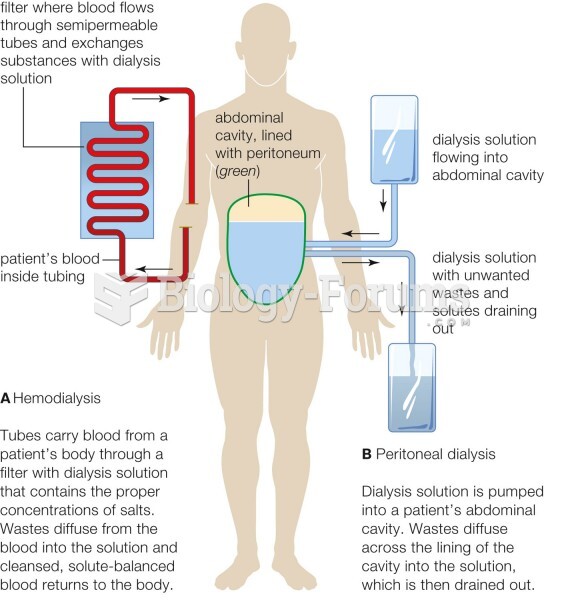|
|
|
The B-complex vitamins and vitamin C are not stored in the body and must be replaced each day.
If all the neurons in the human body were lined up, they would stretch more than 600 miles.
Cytomegalovirus affects nearly the same amount of newborns every year as Down syndrome.
Chronic necrotizing aspergillosis has a slowly progressive process that, unlike invasive aspergillosis, does not spread to other organ systems or the blood vessels. It most often affects middle-aged and elderly individuals, spreading to surrounding tissue in the lungs. The disease often does not respond to conventionally successful treatments, and requires individualized therapies in order to keep it from becoming life-threatening.
It is difficult to obtain enough calcium without consuming milk or other dairy foods.







